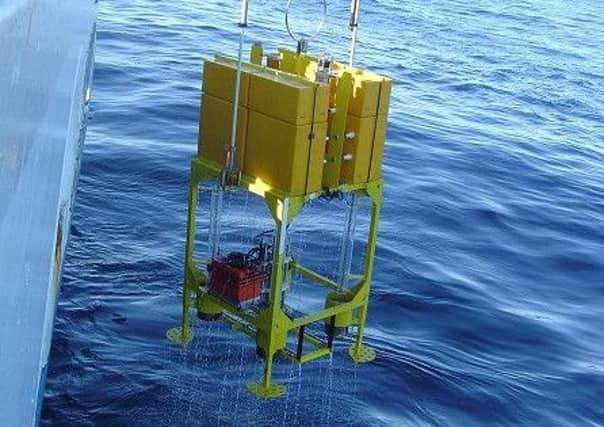Scots researchers to explore underwater abyss


Researchers at the Scottish Association for Marine Science (Sams) will use specially designed deep-sea robots to study organisms living nearly 11 kilometres beneath the surface of the sea in the most inhospitable environment on the planet.
Hadal zones, named after the mythological underworld Hades, are areas of the sea floor where tectonic plates of the earth’s geological crust have collided and overlapped to form deep trenches. Plunging deeper than 6,000 metres, these inaccessible regions are the least explored parts of the planet.
Advertisement
Hide AdAdvertisement
Hide AdNow the new £2.3 million Hades Project, led by Professor Ronnie N Glud of Oban-based Sams and the University of Southern Denmark, will for the first time allow scientists to analyse live creatures while in their natural environment.
Previous analysis has been limited to specimens that could be retrieved without suffering damage from the drop in pressure experienced during the long trip up to the surface.
But three robots are being custom-built to withstand the extreme pressure and unique challenges involved in diving to the deepest abysses at the bottom of the sea.
They will be used to investigate how life is sustained at such enormous depths and how its activity affects how the oceans and the earth function.
The hi-tech devices will allow experts to study a wider range of organisms than ever before.
Prof Glud has been involved in other expeditions to probe the world’s furthest reaches, most notably the 2013 investigation of the Mariana Trench – the deepest spot on the planet.
“It is extremely difficult to investigate what actually happens in the extreme deep,” he said.
“Organisms that are removed from their natural extreme environment and studied in a laboratory will inevitably be affected – and potentially killed – by the large pressure difference during sample recovery.
Advertisement
Hide AdAdvertisement
Hide Ad“In onboard laboratories, researchers generally only study organisms that can withstand the recovery – and they are not necessarily the ones that are most important in the deep.
“It is therefore important to examine the organisms and their metabolic activity in that environment.”
The three trenches to be explored are in the Pacific Ocean: the Atacama Trench, off Chile; the Japan Trench, south and east of Japan; and the Kermadec Trench, north of New Zealand.
Even though they account for just 2 per cent of the world’s oceans, experts believe hadal zones could have a disproportionately large impact on the global carbon cycle.
The team’s earlier work showed the Mariana Trench serves as a biological “hot spot”, with surprisingly high levels of microbial activity.
They believe investigating more of the unexplored trenches will help explain how organisms function at extreme pressures and identify the role they play in the bigger picture.
The three trenches have been selected because they provide a range of different depths and characteristics.
Dr Robert Turnewitsch, principal investigator in marine geochemistry at Sams, worked alongside Prof Glud on the Mariana Trench study.
“I want to be surprised,” he said.
“I want to find something that challenges our views and perceptions of the deep sea, and we now have a great opportunity to do that.”
Hades is being funded by the European Research Council.